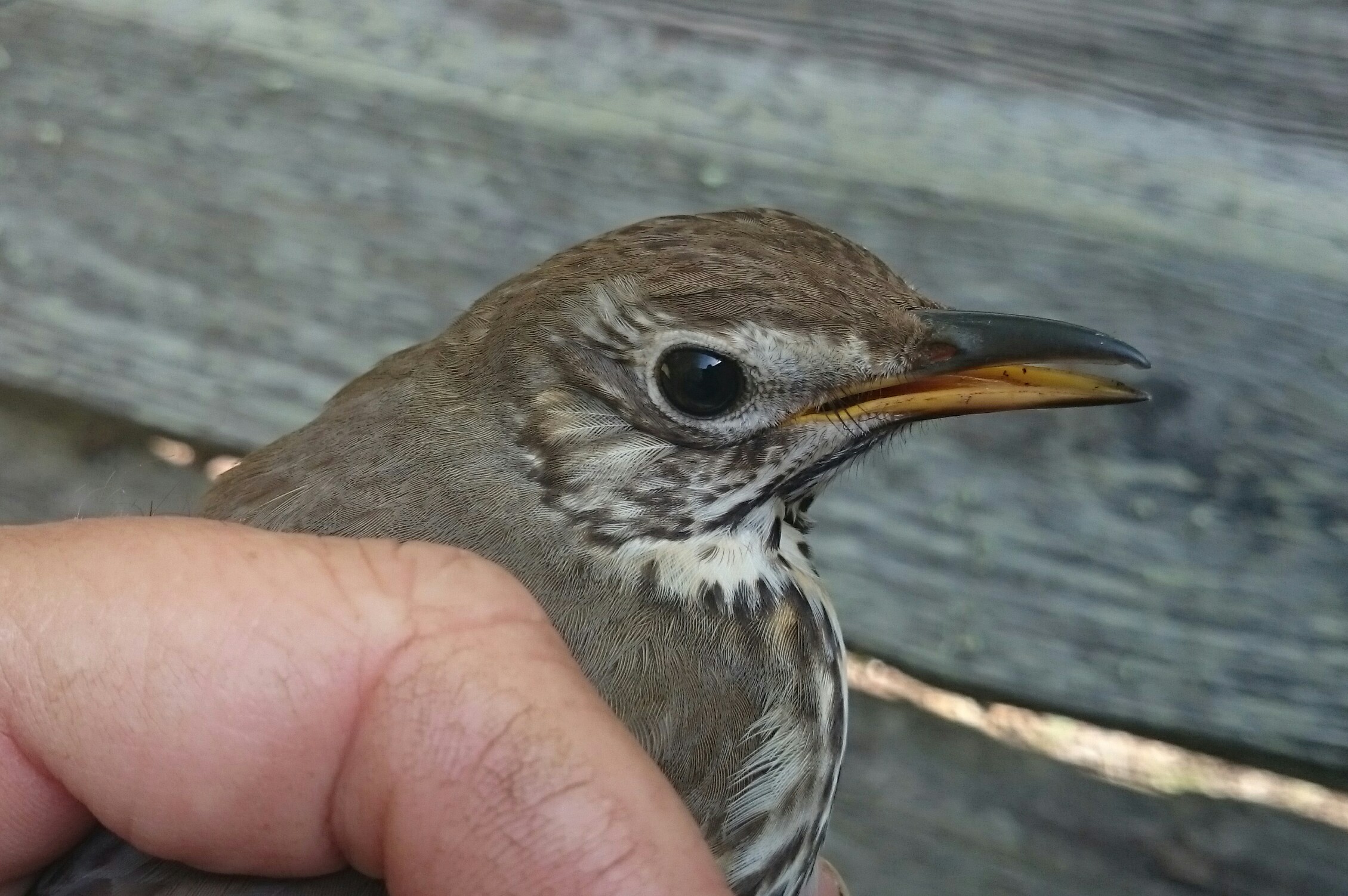A very busy week one way or another. Visiting ringers/birders Linda Lowndes, Barry Summers and Chris & Richard Dufeu all made valuable contributions to our recording and research. Chris additionally to bird ringing looking at the various species of slug inhabiting Alderney, finding new species thought not to have been previuosly recorded here. The male Garganey remained on Mannez quarry whilst the elusive Hoopoe was seen up until the 14th, last observed by Anne-Isabelle Boulon in Barrackmasters Lane. Also on the 14th Lois le Lacheur found and photographed a fine male Ring Ouzel on Longis common where a cuckoo was also seen, possibly the same cuckoo was heard at Barrackmasters lane. On the 10th we recorded our first Sedge Warbler and Whitethroat of the spring, both ringed at Longis reserve. On the 13th a Hobby hurtled over the golf course headed north no sign of stopping, other migrants that day were a Fieldfare, Greenshank and 2 Whimbrels all ‘fly overs’ at Longis common while at the same venue showing well a cracking Blue headed Yellow Wagtail, in the afternoon there were 30 Swallows, 8 Sand Martins and a House Martin over Longis pond.
Some of this weeks highlights in no particular order were:
13th April – Mist netting on Longis common produced our first ringed Wheatear of this spring. A very robust first year male whose measurements confirmed it to be the larger ‘Greenland’ race leucorhoa. Shortly after we caught a second Wheatear that was entirley and clearly a comparatively smaller slighter bird

Greenland Wheatear – photo – ABO
14th April – One of my favourite moths from last year made its first appearance in the OBS trap.

Pale Prominent moth – Obs moth trap – photo ABO
11th April – Song Thrush – Ssp Philomelos.
A real bonus of being at such a great migration spot is the opportunity to see interesting sub species and geographical variations. Last year we had a couple of these very pale/grey Song Thrushes that meet the criteria I can find that suggests they are the nominate ssp philomelos. Whilst variation of Song Thrush sub species is generally considered clinal and at best ‘slight’; these predominantly grey birds really stand out. Indeed the only brown/rufous parts consistent with the British ssp clarkei are the outer flight feathers depicted below where the grey against brown contrast across the wing is very clear. The underparts of philomelos are much paler as are the markings around the eye and ear coverts.

Blue-headed Yellow Wagtail – Longis Common – photo – ABO



